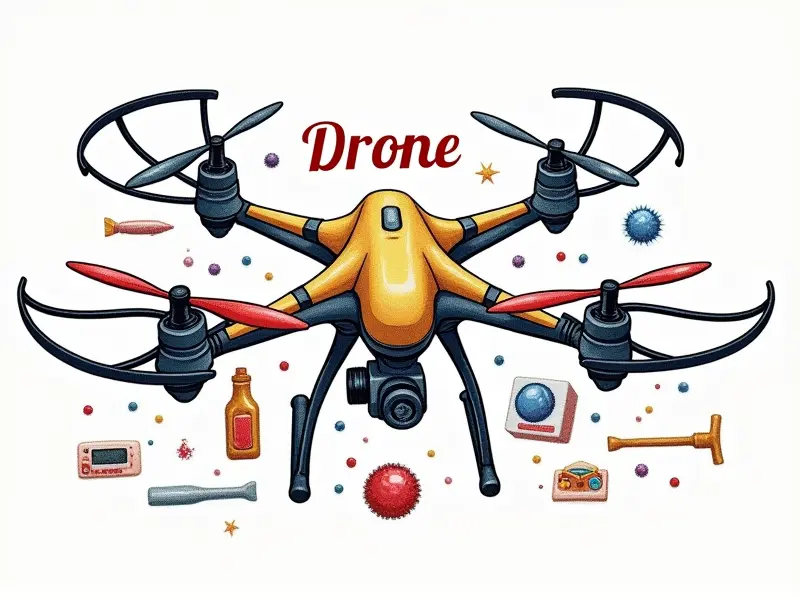How do I start flying drones?

Beginner's Guide to Flying Drones Safely
Flying drones has become increasingly popular in recent years, offering enthusiasts a unique way to capture stunning aerial footage and explore the world from above. However, for beginners, diving into the drone world can be overwhelming due to the sheer variety of models, technical jargon, and safety regulations. This guide aims to provide you with essential information on how to start flying drones safely and effectively.
First Steps in Drone Flying for Beginners
The first step towards becoming a proficient drone pilot is understanding the basics. You need to familiarize yourself with the terminology and components of your drone before taking it out for its maiden flight:
- Drone Body: This refers to the main frame or body of the drone, which houses all internal electronics.
- Motors & Propellers: The motors and propellers are responsible for generating lift and allowing your drone to move in different directions.
- Battery: Drone batteries provide power to the motors and other onboard systems, ensuring smooth operation during flights.
Once you have a basic understanding of these components, it's time to assemble your drone. Follow the manufacturer’s instructions carefully to avoid any potential issues or damage.
Essential Tips for New Drone Pilots
Before taking off with your new drone, there are some crucial tips that every beginner should know:
- Practice in Open Areas: Start flying your drone in open fields or parks where you have plenty of space to maneuver without hitting obstacles.
- Understand Flight Controls: Spend time learning how the flight controls work. This includes understanding pitch, roll, yaw, and throttle.
- Check Weather Conditions: Always check weather forecasts before flying. Windy conditions can make it difficult to control your drone effectively.
Getting Started with RC Quadcopters Easily
If you're considering quadcopters, these multirotor aircraft are excellent for beginners due to their stability and ease of use:
- Choose the Right Model: Select a beginner-friendly model that comes with built-in GPS stabilization.
- Learn Basic Maneuvers: Practice basic maneuvers like hovering, forward/backward movement, and turning.
- Join Online Communities: Engage in online forums or social media groups dedicated to drone enthusiasts. This can provide valuable advice from experienced pilots.
Understanding Drone Laws Before You Start
Flying drones legally is crucial, and it's important to be aware of the regulations set by your country:
- Airspace Regulations: Check local laws regarding airspace restrictions. Many areas have no-fly zones near airports or military installations.
- Privacy Concerns: Be mindful of privacy issues when flying over private property without permission.
- Licensing Requirements: Some countries require pilots to obtain a license before operating drones for commercial purposes.
Best Drones for Learning to Fly FPV (First Person View)
If you're interested in flying FPV, which provides an immersive experience as if you were sitting inside the drone:
- Select a Beginner-Friendly Model: Choose a model that is easy to control and has good battery life.
- Invest in Quality Gear: Good quality goggles and video transmitters are essential for an enjoyable FPV experience.
- Practice Regularly: Consistent practice is key to improving your skills. Start with simple maneuvers and gradually increase complexity.
Learn Drone Basics Before Taking Flight
Before you start flying, it's important to learn the basics of drone operation:
- Understanding Battery Management: Know how to properly charge and store your batteries to ensure optimal performance.
- Mastering Camera Controls: If your drone has a camera, understand how to adjust settings like ISO, shutter speed, and aperture for better footage quality.
- Safety Checks: Perform routine safety checks before every flight. This includes checking propellers, battery connections, and GPS signals.
Easy Setup and Fly Tips for Drones
To make your first flights as smooth as possible:
- Follow Manufacturer’s Instructions: Always refer to the manual provided by the manufacturer for specific setup instructions.
- Start Indoors: Begin practicing indoors where there are no wind gusts or obstacles. This helps build confidence and fine-tune your skills.
- Use Training Modes: Many drones come with training modes that limit speed and altitude, providing a safer environment for learning.
Quick Start Guide to FPV Racing Drones
If you're interested in the thrilling world of FPV racing:
- Select an Appropriate Frame: Racing drones typically have frames designed specifically for high-speed maneuvers.
- Upgrade Your Equipment: Invest in better cameras, antennas, and batteries to improve performance and reliability.
- Practice Racing Scenarios: Set up practice courses in safe environments to hone your racing skills before competing.
How to Fly Your First RC Helicopter
Flying an RC helicopter can be challenging but rewarding. Here’s how to get started:
- Select a Beginner-Friendly Model: Choose a model that is designed for beginners with features like auto-stabilization.
- Understand Helicopter Controls: The controls are different from those of quadcopters, focusing on pitch and roll rather than yaw and throttle.
- Patient Practice: Flying a helicopter requires patience and consistent practice. Start with basic maneuvers before attempting more complex ones.
Starting Out in RC Airplane Flight
For those interested in flying RC airplanes, here are some tips to get you started:
- Select the Right Model: A trainer plane is ideal for beginners due to its stability and ease of control.
- Master Basic Flight Maneuvers: Learn how to take off, land, and perform basic maneuvers like turns and loops.
- Familiarize with Wind Conditions: Airplanes are more sensitive to wind than other types of RC vehicles. Understanding wind conditions is crucial for safe flying.
Conclusion
Starting your journey into the world of drone flying can be both exciting and daunting, but with proper preparation and practice, you'll soon find yourself enjoying the skies like never before. Always prioritize safety by understanding local laws and regulations, and don’t hesitate to seek advice from more experienced pilots in online communities or forums. Happy flying!

